Thermal Evaporation
The materials are placed in a resistive heat source in vacuum environment to evaporate directly to the substrate, where they condense back to a solid state form a thin film.
Organic Material
Organic material thermal deposition system is a thermal evaporation system deposited organic materials onto substrate surface. This process requires high precision and uniformity of thin films by accurately controlling temperature and deposition rate.
.jpg)
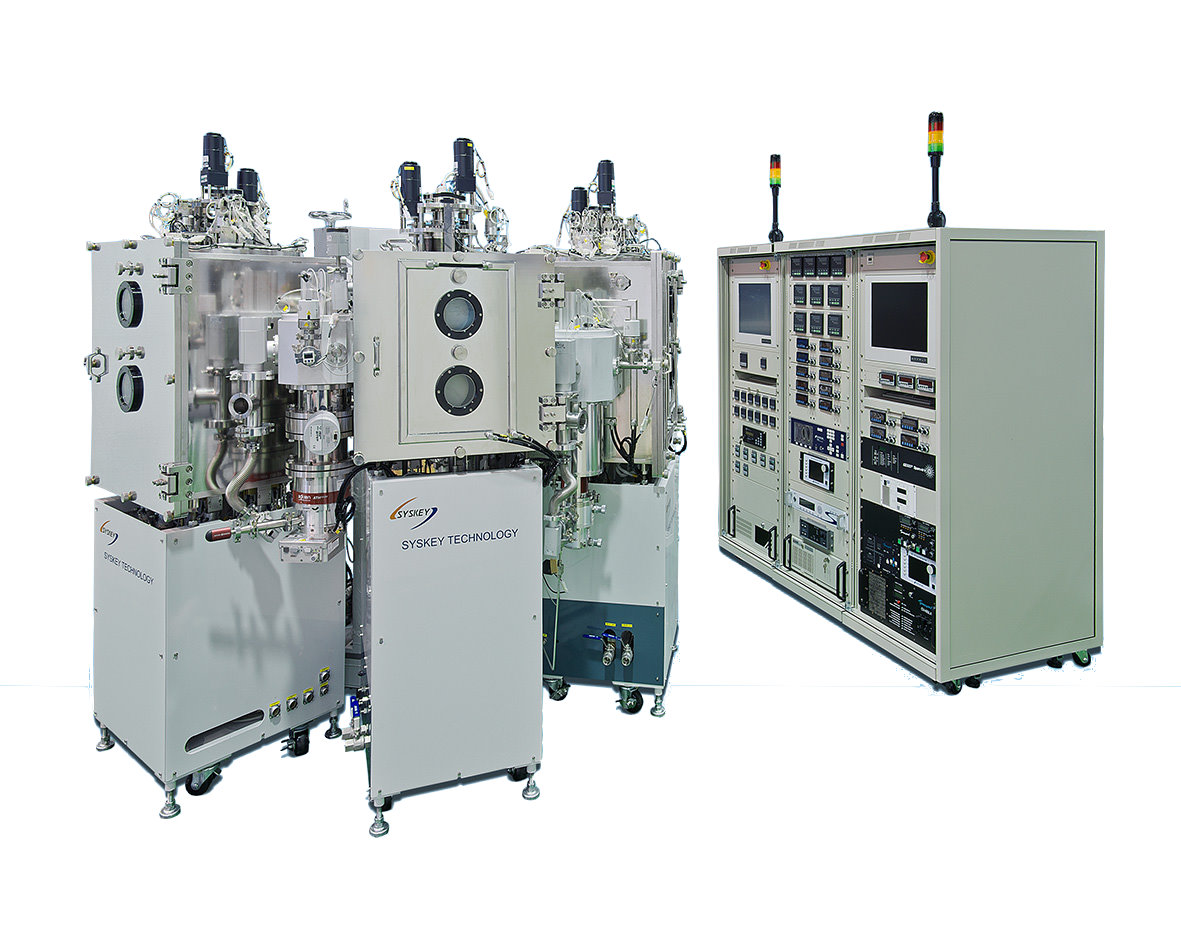
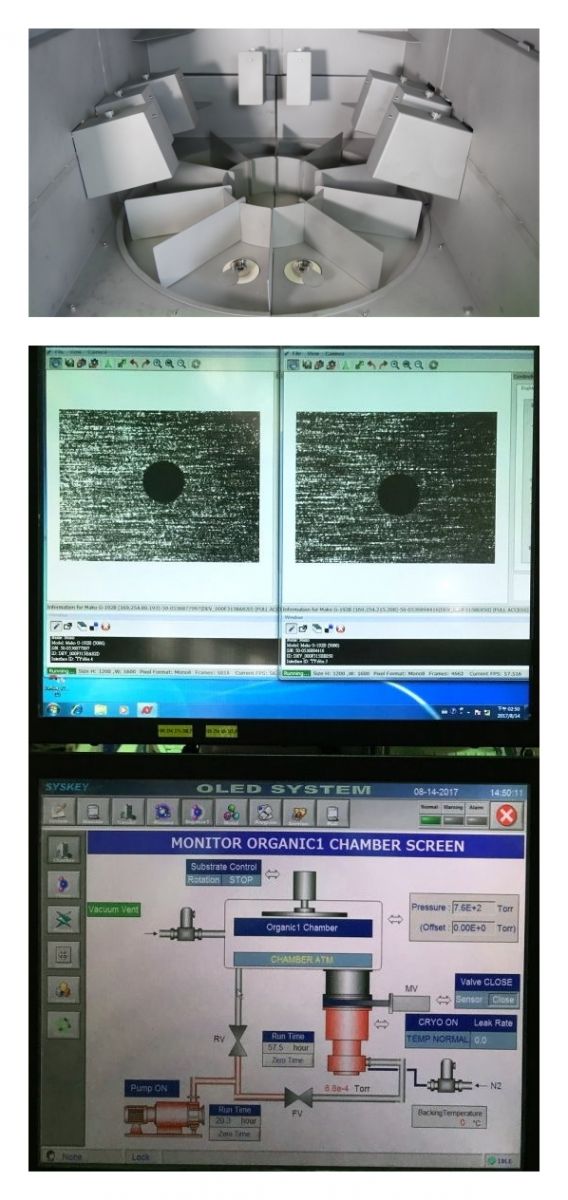 To achieve the requirements, organic material thermal deposition system uses effusion cell as heating source with metal, quartz, ceramic or PBN crucible to contain organic material as well a PID controller to control deposition rate. This system is usually used in organic electronic research fields such as OPV, OLEDs, OPDs...
To achieve the requirements, organic material thermal deposition system uses effusion cell as heating source with metal, quartz, ceramic or PBN crucible to contain organic material as well a PID controller to control deposition rate. This system is usually used in organic electronic research fields such as OPV, OLEDs, OPDs...
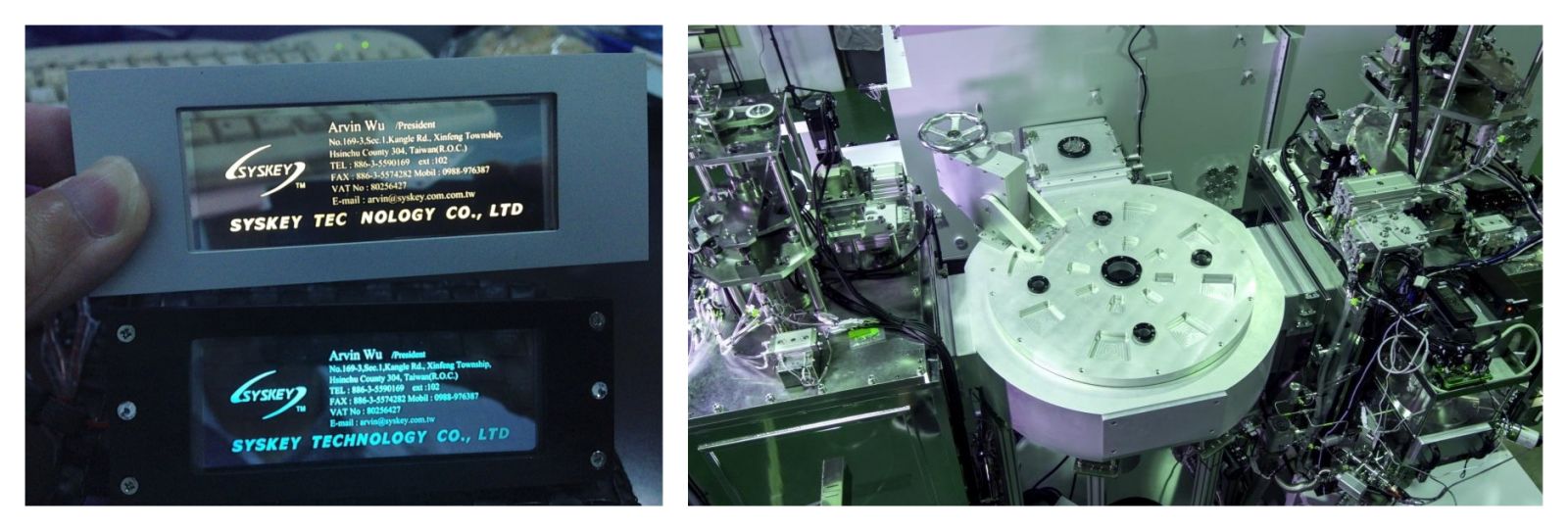
| Organic light-emitting diode with high penetrati. | Using CCD alignment to control the |
| alignment of FMM and substrate, for | |
| the alignment accuracy ≦ ± 5um. |
Encapsulation System
SYSKEY has launched a glass-to-glass encapsulation and pressing mechanism for laboratory grade. We integrate glue coating (UV glue, liquid gate) and UV lamps can be installed in the glove box or a separate encapsulation chamber, it can be put manually or through the automatic film transfer
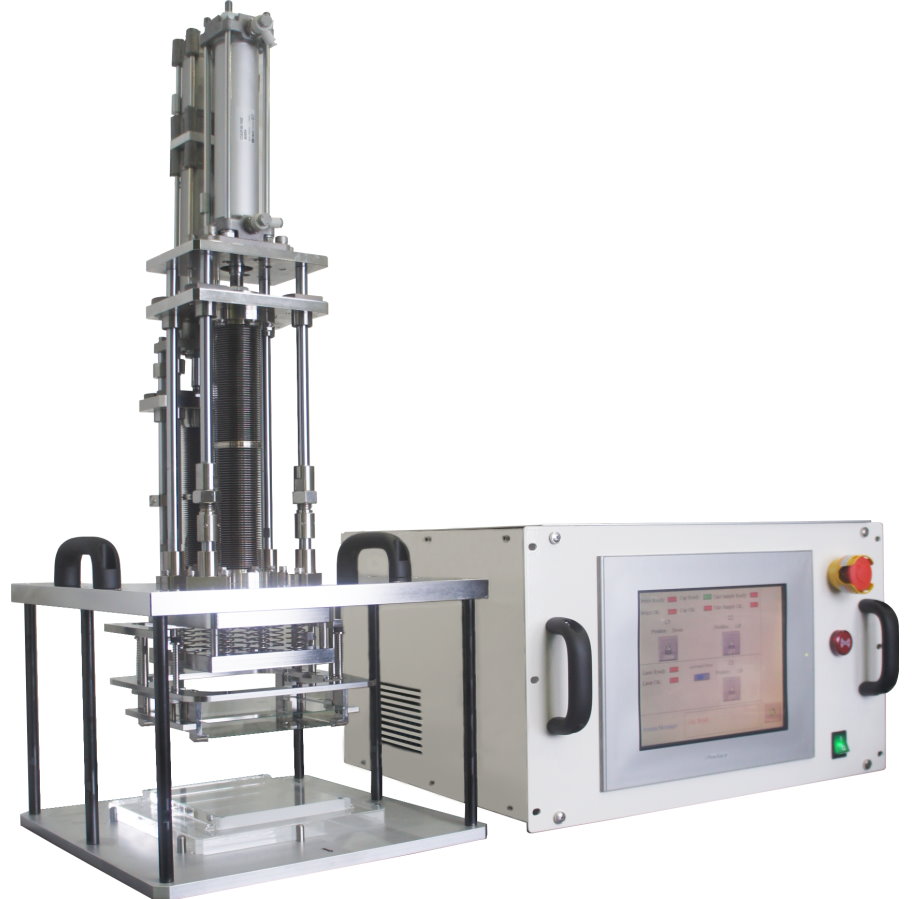
system.Flexible OLEDs must be thin and flexible, so the glass package is not suitable for this type. Thin-film encapsulation (TFE) or hybrid packaging technology must be used. SYSKEY initiates plasma-enhanced chemical vapor deposition, atomic layer deposition and Parylene coating system for TFE. We use low-temperature film-forming technology to layer multiple layers (SiNX, SiOXNX, Al2O3, ZnO, Parylene) on the OLEDs to get a better protection layer and reduce oxygen and water, thereby improving the life and performance of OLED panels.
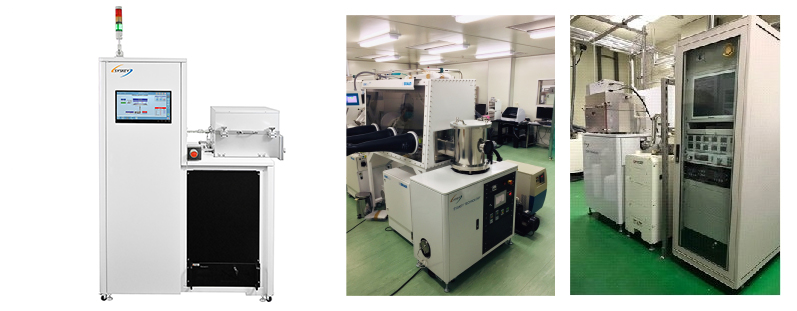
Atomic layer deposition system Parylene coating system Plasma-enhanced chemical
vapor deposition
|
WVTR for 5X10-4 g/m2/day |
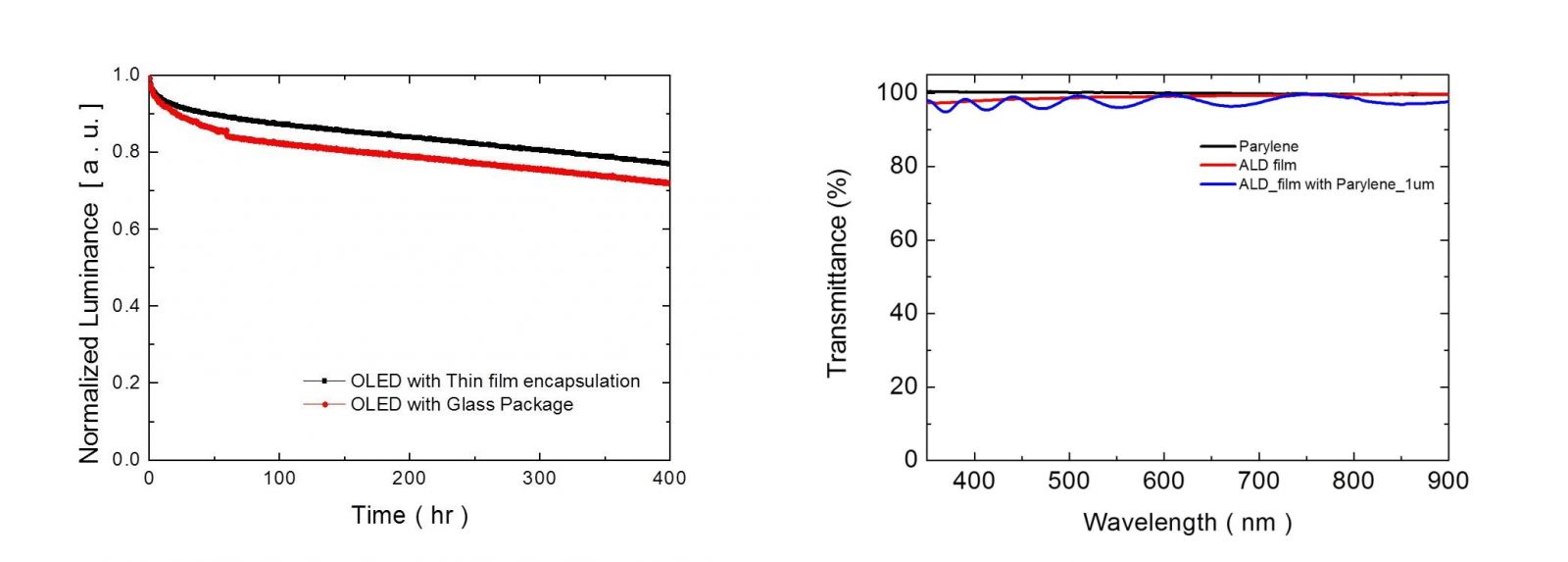 |
|||
| TEST RESULTS | IN SELECTED UNITS | OLED lifetime for TFE, at the initial The penetration of thin film encapsulation layer | ||
| Transmission Rate: | -6.603313(<0.5) | mg/[m2-day] | luminance of 10000 cd/m2 | |
| Permeation: | -3.119675 | mg-mil//[m2-day] | ||
| Date points | ||||
| Time Rate/Event | Time Rate/Event | Time Rate/Event | Time Rate/Event | |
| 0:00 Condition | 8:00 Test | 17:00 -12.75783 | 26:00 -7.118823 | |
| 35:00 -7.602876 | 44:00 -7.667113 | 53:00 -6.392888 | 62:00 -6.688553 | |
| 71:00 -6.879404 | 80:00 -6.768686 | 89:00 -6.603313 | 95:29 Complete | |
| 95:29 Finished | ||||
| Applications | Chamber |
|
|
| Configurations and benefits | Options |
|
|